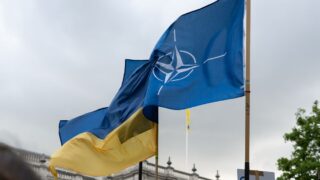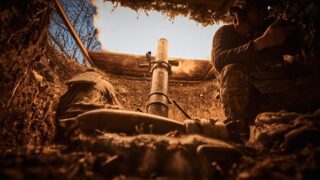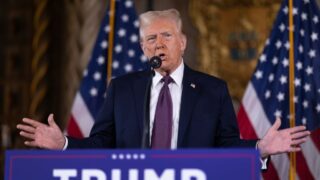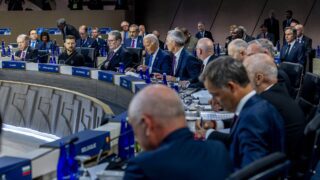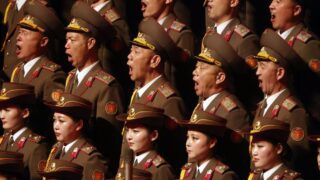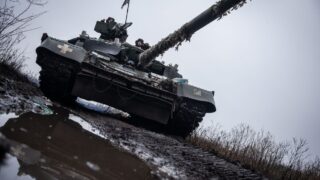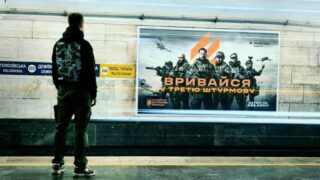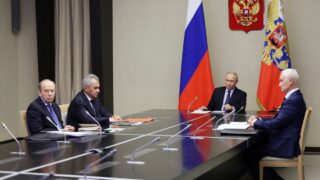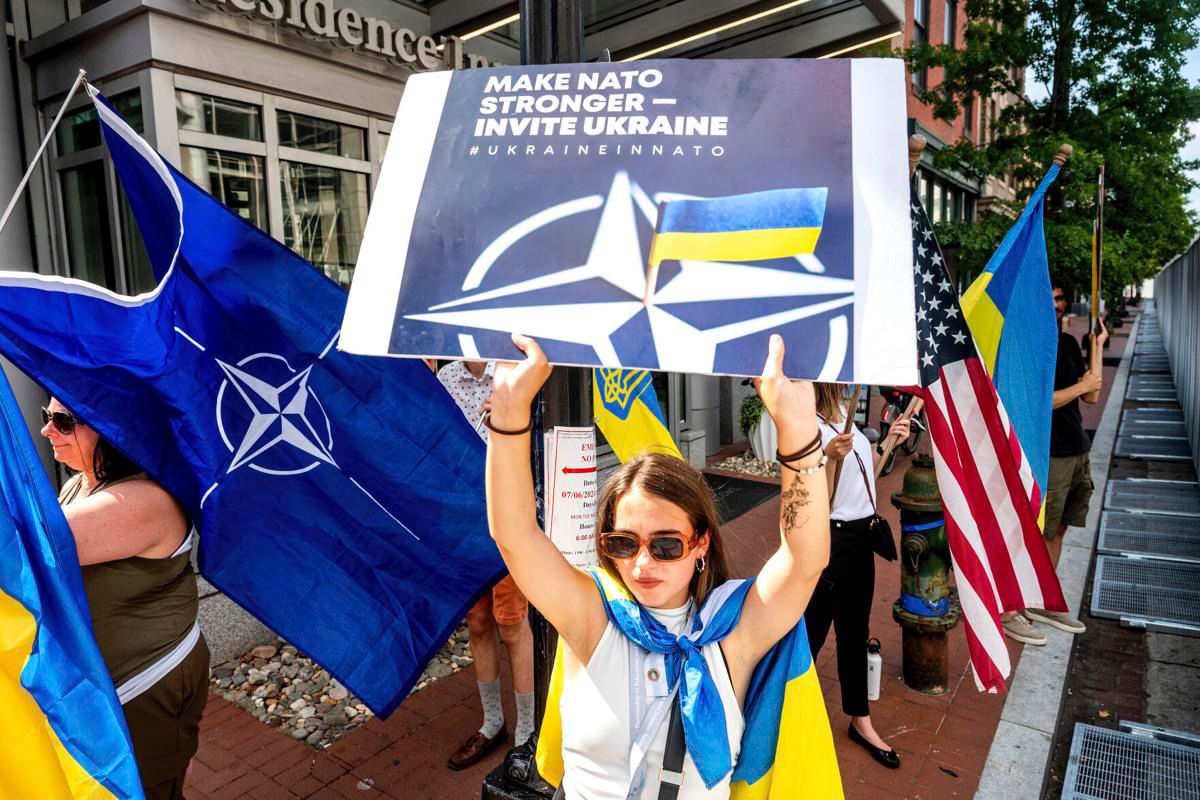
NATO must reform or be dissolved
If NATO wants peace, it must first find the courage to admit that it no longer deters the enemy and that it no longer guarantees security. In its present form and shape, the Alliance might even have become a liability, blocking the prospect of peace.
As such, the Ukrainian Victory Plan marks a pivotal moment for NATO.
On 26 September, President Zelenskyy presented his plan to achieve a just and lasting peace to President Biden. It has since been presented to Vice President Kamala Harris, former president Donald Trump, the UK, France, Italy, Germany, the Ukrainian Parliament, the European Council, and NATO.
NATO membership is a key element of the plan. The plan also includes requests for improved intelligence support, offensive and defensive capabilities, plans to strike inside Russia, and increased NATO involvement on and over Ukrainian territory.
Zelenskyy unveils 5-point ”Victory Plan” to Ukrainian Parliament
The victory plan depends on the political will of its international partners.
The flurry of meetings has so far generated limited public declarations of support. The US and many European leaders have approached the plan with caution. Politicians, analysts, and experts focus on the realism of Ukraine’s asks rather than what is really at stake: a choice between Peace or War.
The Victory Plan does not ask for anything outside the roam of possible. It simply asks for the tools to force Russia to accept a just and lasting peace.
Nevertheless, it is asking for something some NATO members don’t want to provide, including NATO membership, long-range strike capabilities, permission to strike targets inside Russia, Air Defence from NATO territory, and not least, the defensive and offensive capabilities required to force Russia to accept peace.
Ukraine’s Victory Plan is, however, essential for European security, stability and prosperity because it offers to strengthen Europe’s strategic autonomy.
Europe has been deeply concerned about slowing economic growth for over two decades. The former president of the European Central Bank, Mario Draghi, recently concluded that Europe risks weakening its strategic autonomy. He calls for a €750-800 billion increase in annual investments to address the negative trend.
There is only one quick fix to the economic problems facing Europe: Ukraine.
Ukraine has critical metals and strategically important energy and food production worth trillions of US dollars. Ukraine’s technological sector, especially IT, can bring new dynamics to the EU’s digital transformation.
European security policy is facing its biggest stress test since the start of the Cold War. It stayed “cold” because of NATO’s unity of efforts, strategic clarity, and, not least, the combination of political will and military power that constitutes the essence of deterrence.
Today, and because of the absence of all of the above, Russia is waging a Hybrid War in Europe. MI-5 believes the West is already in a state of undeclared political war with Russia.
According to the German Foreign Intelligence Service, countries supporting Ukraine are perceived as enemies and, therefore, in direct conflict with Russia. It is no longer deterred by NATO and European officials fear a military conflict between NATO and Russia in 2 – 5 years.
A Russian decision to attack NATO will not be based on objective indicators like military strength and readiness alone. It will make the move when it deems that a window of opportunity has appeared.
That moment might be fast approaching, and the West is in a race against time.
Is Europe preparing for war? Key discussions from Warsaw Security Forum
The situation is exacerbated by the fact that NATO is historically weak because of Europe’s failure to invest in security and defense. The NATO 2% of GDP guidelines were introduced in 2006.
Europe is sorely lacking in heavy ground forces. 10 years into the war, NATO finally proposed to increase the number of combat-ready brigades from 82 to 131 (a 60% increase, or 245,000 fresh soldiers). The number of combat corps is planned to increase from 6 to 15 (250% increase), and the number of division headquarters from 24 to 38.
The Alliance will strengthen its ability to fight over time (e.g., more ammunition, long-range precision weapons, logistics, and transport). The number of ground-based air defense systems is aimed to increase from 293 to 1467 (a staggering 500% increase).
These are all indicators of NATO’s present military status. It has several critical vulnerabilities and Russia knows it.
Generating these forces and capabilities requires time the Alliance no longer has. NATO’s two strategic military commands stress that the Alliance must strengthen its warfighting capability most urgently. This will require the Allies to invest significantly more than 2% of GDP in defense.
Crucially, even if the funding is made available, it will take about ten years to implement the increase.
There is only one quick fix to the security problems facing Europe: Ukraine.
As the US pivots away from Europe to the Pacific, Ukraine proposes replacing US forces in Europe. As Europe is becoming increasingly concerned about the US commitment to NATO and seeks to establish strategic autonomy, Ukraine stands ready to fill the gap. It offers to make the biggest and most battle-hardened army in Europe available to the Alliance.
Ukraine offers to protect NATO and Europe from future Russian aggression. It only asks NATO to reciprocate and help Ukraine secure a just and lasting peace for Europe.
Amazingly, some NATO members remain skeptical. Negative even. This raises the question: Can Europe be a part of an Alliance blocking peace?
Peace and stability are far more important than keeping up the appearance of an Alliance that has long lost its relevance. NATO must either fundamentally reform or be dissolved to benefit a new military alliance.
Deterrence is a psychological factor. It only works as long as the enemy finds NATO credible. That is no longer the case.
- This is why Russia is waging a war of aggression in Ukraine and a hybrid war in the US and Europe.
- This is why a coalition of autocracies is being formed.
- This is why the strategic partnership between Russia, China, North Korea and Iran is evolving and expanding.
- This is why the Middle East is on fire.
- This is not least, why the Global South has refrained from joining the Western efforts to isolate and sanction Russia.
NATO has become a liability because it creates an illusion of a strong collective defense. It creates an excuse to do less than what is required to secure peace in Europe.
The reality is that the Alliance is no longer effective. Its decision-making process is corrupted, and pro-Russian members have veto rights, destroying NATO’s remaining credibility. NATO’s decision-making process is no different from that of the UN Security Council. It takes only one to make it impotent.
National interests trump collective solutions. Europe has failed to invest in security and defense and lacks, therefore, strategic autonomy. The US has long been shifting its focus from Europe to the Pacific and is again questioning its role in European security.
Despite statements to the contrary, NATO is suffering from fundamental discord over NATO’s level of ambitions, strategy, and commitment.
A future military alliance must be based on commonly shared values and principles. Its member states must consist of democracies only. Members must be vetted based on past merit. It must have a mechanism to kick out members if they undermine the Alliance. The “membership fee” must be absolute. Failure to meet the defined values of percentage as a share of GDP must trigger an automatic expulsion. It must establish a European strategic autonomy to ensure true partnership. A two-thirds vote of members must be introduced to ensure the Alliance can respond resolutely to evolving risks and threats.
The present-day NATO has for years been blocking a just and lasting resolution of the war. It is no longer guaranteeing peace. The Alliance is tacitly enabling the aggressor and undermining European security — not by intent but by its flaws.
NATO has become a liability because it has become an illusion of strength. It allows complacency when courage and resolve are essential. It is time to either dissolve or reform it.
Editor’s note. The opinions expressed in our Opinion section belong to their authors. Euromaidan Press’ editorial team may or may not share them.
Submit an opinion to Euromaidan Press
Related:





